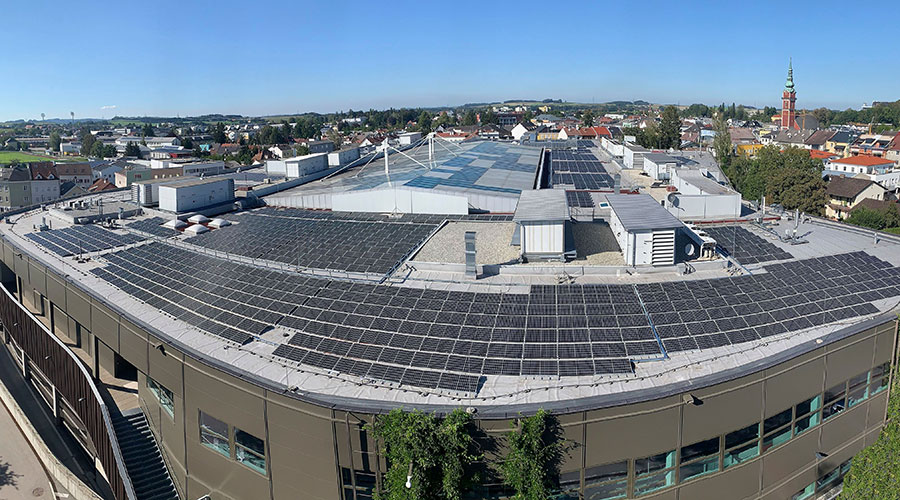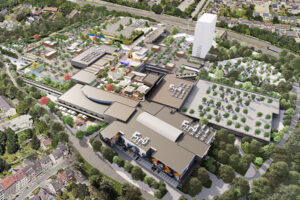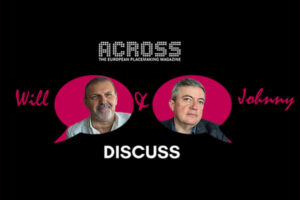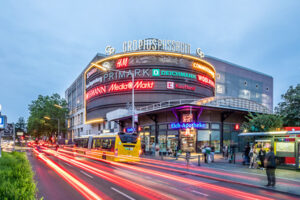SES is committed to sustainable construction and environmentally friendly and resource-saving operations for all of its properties. To that end, SES has adopted a clear energy policy and has made substantial investments in the use of environmentally friendly energy at its shopping destinations. Particular focus has been placed on the increased use of photovoltaics, with the objective of installing photovoltaics systems on 50% of available roof surfaces by 2050, namely all roof areas that are not used as parking decks, terraces, or leisure hotspots. Since 2018, SES has operated a system on the roof of Murpark Graz, which generates approximately 170,000 kWh of electricity. Weberzeile, situated in the city center of Ried, is now following suit.
“SES shopping centers have received several international awards for sustainable development and operation. We have been consistently following this approach for decades – environmentally conscious action is an important part of our corporate DNA,” says Marcus Wild, CEO of SES and Member of the ACROSS Advisory Board.
The awards SES has received include an award for the world’s most sustainable shopping center (Atrio Villach, 2009) and the Sustainability Design Award in combination with an award for the world’s best shopping center (Europark Salzburg, 2007).
Nearly 30 percent of the Required Electricity is Generated In-house
The newly constructed plant in Ried was put into operation at the beginning of September. In just under seven weeks, some 1,500 solar panels were installed across an area of more than 4,100 square meters. The panels cover roughly 50 percent of the roof areas of Weberzeile, and they are used to generate environmentally friendly electricity. The modern 520-kWp photovoltaics system will satisfy nearly 30 percent of the facility’s own electricity requirements.

Weberzeile Ried Showcase Project
Weberzeile Ried has maintained an excellent climate balance since its opening thanks to its environmentally friendly construction, its geothermally-supported heat supply, and the use of a demand-controlled ventilation system. The photovoltaics system installed atop Weberzeile is the largest to be mounted by SES Spar European Shopping Centers to date and is the benchmark for the installation of solar power systems on the roofs of other SES shopping centers throughout Austria.
SES has yet another special feature in its portfolio. Sillpark in Innsbruck boasts its own hydroelectric power plant, which makes it unique in the shopping center industry. A hydroelectric power plant has been supplying Sillpark with green electricity since 1990. The power plant generates approximately four million kilowatt hours of electricity per year, and it also supplies energy to the public grid outside Sillpark’s opening hours. In 2017, SES took one step further and opened a fish-passable ramp in the Tivoli dam area in cooperation with the Brenner Base Tunnel Company BBT SE. Since then, fish have been able to freely cross the Sill River in both directions. The fish ramp is in line with the latest standards, is practically maintenance-free, and is unique in the shopping center sector. A total of more than 1.5 million euros was invested, including federal and state funding. There is yet another special feature of note: Customers can fill their cars with green electricity generated by the Sill at the E-filling stations in the Sillpark underground parking garage.
Sustainable Environmental Protection Measures
In addition, SES has implemented a wide range of environmental protection measures at its approximately 30 centers, including a complete switch to LED, a switch to 100% renewable energy sources, heat recovery, the expansion of electromobility, and demand-controlled ventilation (air quality). The last measure makes use of sophisticated technology to ensure comfortable room temperatures as well as good air quality with minimum energy consumption.
SES Climate Goals
- Photovoltaics systems on 50% of available roof areas
- 100% energy generated from renewable energy sources
- 46% reduction in energy consumption (compared to 2014)
- 88% fewer CO2 emissions (compared to 2014)





